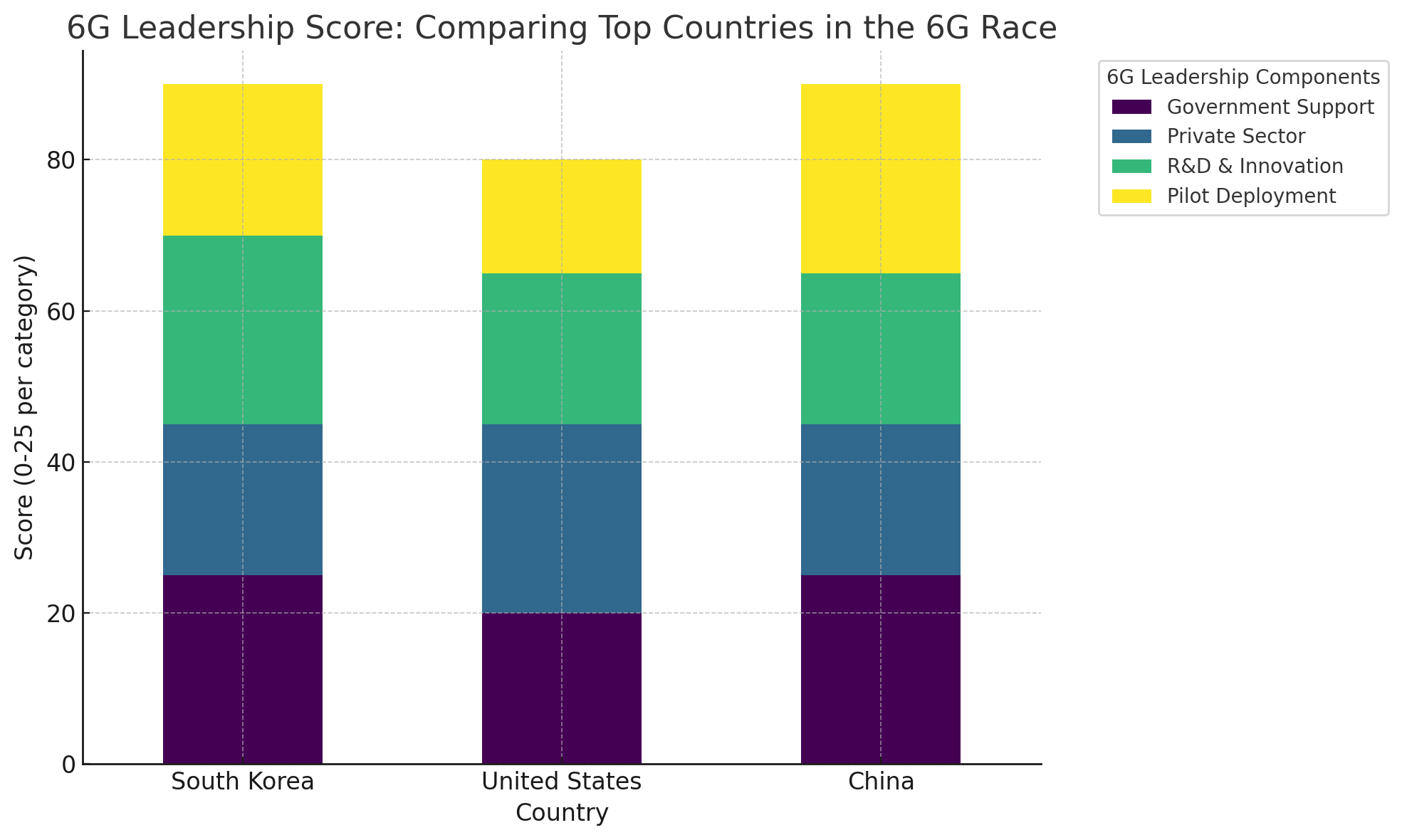While the world is still unlocking the potential of 5G networks, the global race for 6G technology has already begun — and the competition is fiercer than ever. 6G networking will redefine how we live, work, and communicate, delivering ultra-fast speeds, near-zero latency, and a fully hyperconnected digital ecosystem.
From immersive virtual realities and AI-powered smart cities to next-generation autonomous systems and IoT innovations, the possibilities of 6G are virtually limitless.
But the critical question remains: Which countries are leading the charge in this next-generation connectivity revolution? Let’s explore the top three nations shaping the future of global 6G networks.
1. South Korea
- Why South Korea is at the Forefront of 6G Technology Development?
South Korea has long been a global leader in telecom innovation, and its approach to 6G is no exception. Infact, the nation has already unveiled its 6G roadmap, aiming for commercial rollout as early as 2028. South Korea is leading the global 6G race. Moreover, the government in partnership with tech giants like Samsung and LG is investing heavily in 6G research and development. Certainly, these efforts position South Korea at the forefront of next-generation communication and cutting-edge connectivity.
South Korea isn’t just building faster internet — it actively develops AI-integrated networks, ultra-low latency systems, and holographic telepresence technologies.
Government-funded testbeds are already simulating real-world 6G applications. From smart factories and autonomous vehicles to immersive virtual experiences, South Korea is preparing for a future where hyperconnected digital ecosystems become a reality.
Indeed, South Korea sets the pace for 6G innovation. Through smart investments, dynamic public-private collaborations, and forward-thinking in R&D, it actively drives the next wave of technological breakthroughs that the world is watching closely.
2. United States
- How the U.S. Private Sector Powers 6G Breakthroughs?
The United States has always been synonymous with technological innovation, and 6G is no different. While the U.S. faces stiff competition from Asia, it leverages its private-sector strength to remain a formidable player. Indeed, companies like Qualcomm, Apple, and AT&T are collaborating with universities and research institutions to push the boundaries of 6G.
In particular, the Next G Alliance is a major initiative driving U.S. leadership in 6G innovation across North America. Notably, this coalition focuses on defining global standards, securing intellectual property leadership, and building a thriving 6G ecosystem. Moreover, U.S. research emphasizes AI-integrated networks, next-generation wireless spectrum use, and advanced security-focused communication frameworks, positioning the country at the forefront of 6G technology.
The U.S. approach demonstrates that competition fuels innovation. By uniting strong government support with agile private-sector efforts, the U.S. is actively shaping a 6G future that is technologically advanced and commercially successful.
3. China
- How China Dominates the First Wave of 6G Trials?
China is already making waves in the 6G arena, backed by massive investments in infrastructure and research. Similarly, leading telecom companies like Huawei and ZTE are testing 6G satellites and exploring space-based communication networks. This could redefine the global connectivity. Notably, China’s focus on quantum communication and advanced AI integration underscores its ambition to dominate both the technological and geopolitical dimensions of 6G.
Indeed, government support is central to China’s strategy. The nation has incorporated 6G into its national innovation agenda, with substantial funding for R&D projects and international collaboration efforts. Pilot 6G networks are already in experimental stages in major cities, emphasizing applications like autonomous transportation, ultra-HD holographic communication, and real-time industrial automation.
China demonstrates that leadership in 6G is not just about speed; it’s about vision, scale, and influence. For tech enthusiasts, China’s approach is a reminder that next-generation networks are as much of a geopolitical tool as they are a technological marvel.

Why 6G Leadership Matters?
The race for 6G isn’t merely about national pride. In fact, it will define the global digital infrastructure for decades. To enumerate, countries leading the 6G revolution are shaping the standards, ecosystems, and applications that everyone will rely on. Moreover, 6G promises not just faster internet, but a hyperconnected world where AI, IoT, AR/VR, and quantum computing converge seamlessly. Certainly, it is the foundation for smart cities, autonomous vehicles, immersive learning, and even next-generation healthcare solutions.
The competition also highlights the importance of collaboration. While South Korea, the U.S., and China are leading the way, international cooperation will be critical to ensure standardization, security, and sustainability of 6G networks. Undoubtedly, South Korea, U.S., and China are the front-runners in 6G race. Each country drives 6G innovation with its own powerful strategy: South Korea accelerates development through rapid innovation and deployment, the U.S. advances through private-sector-driven research, and China pushes ahead with large-scale investment and a bold national vision.
Tech enthusiasts can see this not just as competition, but as a chance to explore and engage with the 6G innovations that will redefine tomorrow’s digital world.
The 6G revolution is coming, and it promises to transform connectivity, society, and the very fabric of our digital lives.




